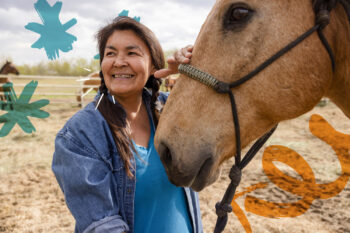Preserving Tradition Starts With Protecting Your Health
Commercial tobacco harms its users and the people around them. Not only can stopping commercial tobacco use help keep you healthy, but it can also protect your family members and the environment around you.
Quitting Commercial Tobacco
Commercial tobacco use is the number one cause of preventable death and disease in the U.S. Whether smoked or chewed, commercial tobacco causes cancer, heart disease, and stroke and makes other health conditions worse.
When you stop using commercial tobacco or other commercial nicotine products, you can add decades to your life. You can also keep others around you healthier by limiting their exposure to secondhand smoke.






